
Welding and cutting equipment manufacturer ESAB (NYSE: ESAB) reported Q3 CY2025 results topping the market’s revenue expectations, with sales up 8.1% year on year to $727.8 million. Its non-GAAP profit of $1.32 per share was 3.7% above analysts’ consensus estimates.
Is now the time to buy ESAB? Find out by accessing our full research report, it’s free for active Edge members.
ESAB (ESAB) Q3 CY2025 Highlights:
- Revenue: $727.8 million vs analyst estimates of $696 million (8.1% year-on-year growth, 4.6% beat)
- Adjusted EPS: $1.32 vs analyst estimates of $1.27 (3.7% beat)
- Adjusted EBITDA: $133.4 million vs analyst estimates of $129.9 million (18.3% margin, 2.7% beat)
- Management slightly raised its full-year Adjusted EPS guidance to $5.25 at the midpoint
- EBITDA guidance for the full year is $537.5 million at the midpoint, in line with analyst expectations
- Operating Margin: 14.6%, down from 15.7% in the same quarter last year
- Free Cash Flow Margin: 9.6%, down from 13.4% in the same quarter last year
- Organic Revenue rose 2% year on year vs analyst estimates of flat growth (156.7 basis point beat)
- Market Capitalization: $7.35 billion
“ESAB delivered a strong quarter on robust execution, with growth in our Equipment and Automation portfolio and from recent acquisitions. Our U.S. business returned to mid-single-digit growth as tariff uncertainties abated, and our EMEA and APAC businesses continued to see strong demand from high-growth markets,” said Shyam P. Kambeyanda, ESAB President and CEO.
Company Overview
Having played a significant role in the construction of the iconic Sydney Opera House, ESAB (NYSE: ESAB) manufactures and sells welding and cutting equipment for numerous industries.
Revenue Growth
Examining a company’s long-term performance can provide clues about its quality. Any business can put up a good quarter or two, but the best consistently grow over the long haul. Over the last four years, ESAB grew its sales at a sluggish 4.1% compounded annual growth rate. This fell short of our benchmark for the industrials sector and is a poor baseline for our analysis.
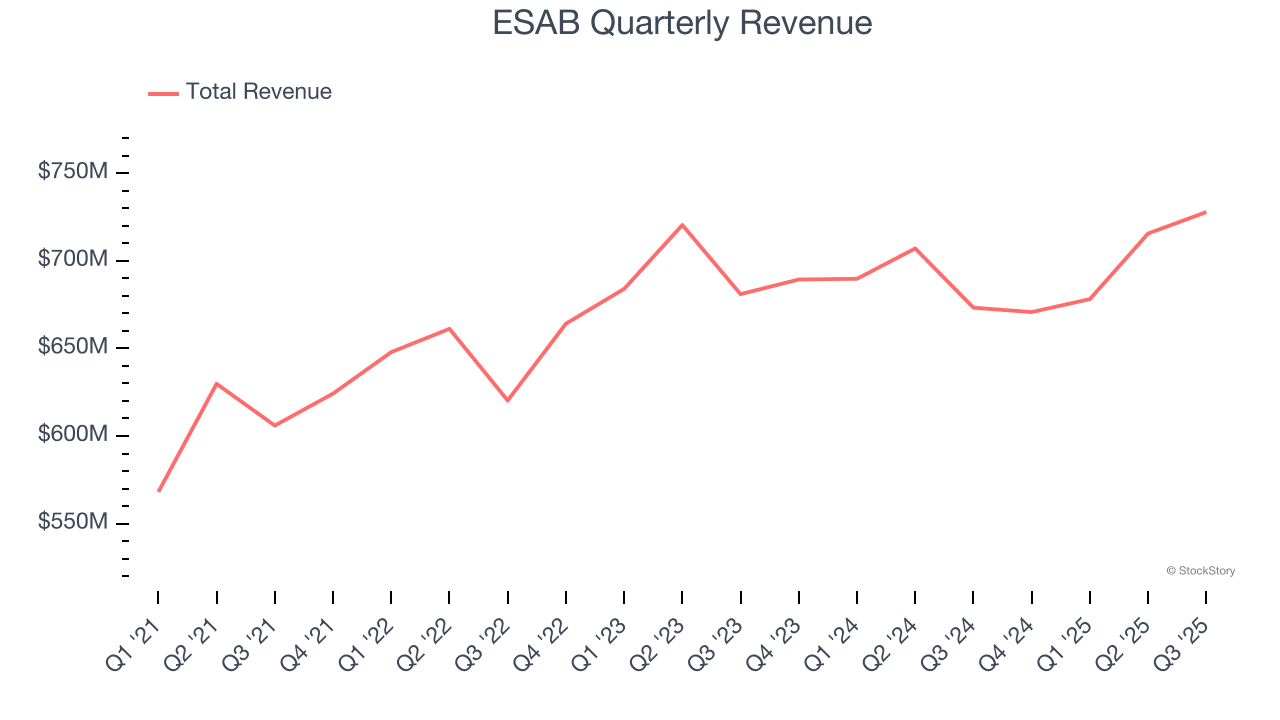
Long-term growth is the most important, but within industrials, a stretched historical view may miss new industry trends or demand cycles. ESAB’s recent performance shows its demand has slowed as its revenue was flat over the last two years. 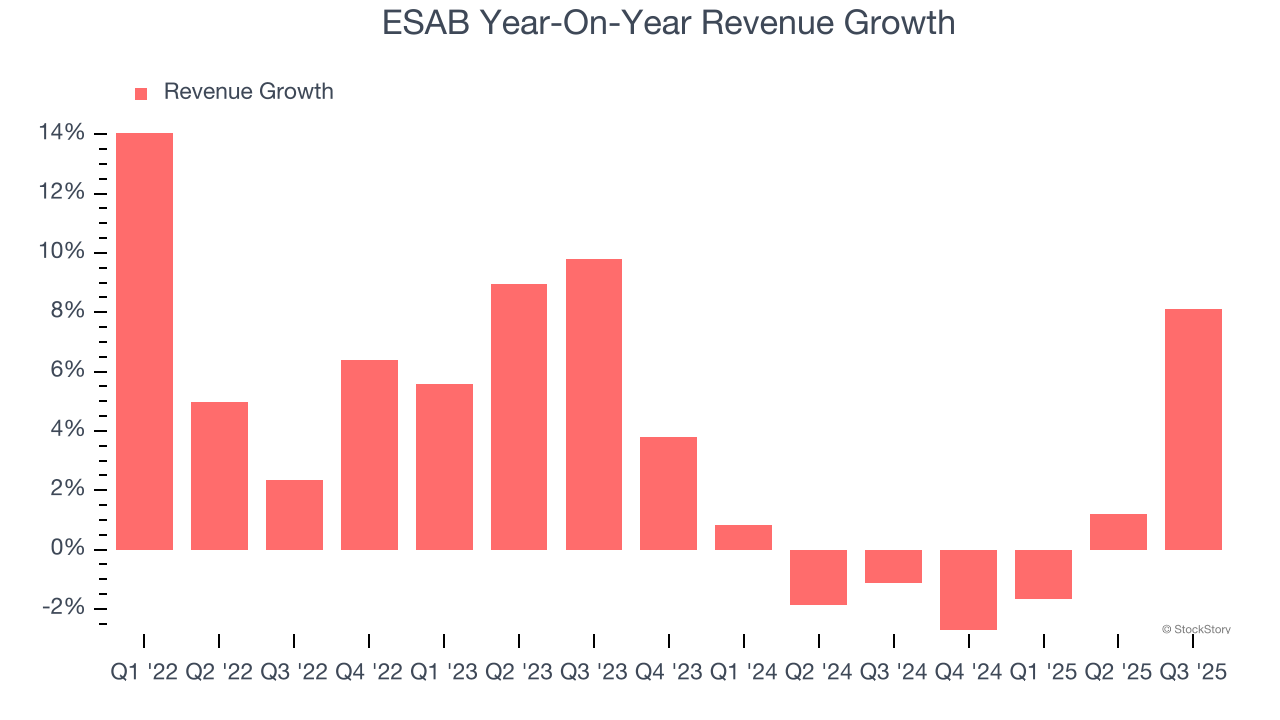
ESAB also reports organic revenue, which strips out one-time events like acquisitions and currency fluctuations that don’t accurately reflect its fundamentals. Over the last two years, ESAB’s organic revenue averaged 1% year-on-year growth. Because this number aligns with its two-year revenue growth, we can see the company’s core operations (not acquisitions and divestitures) drove most of its results. 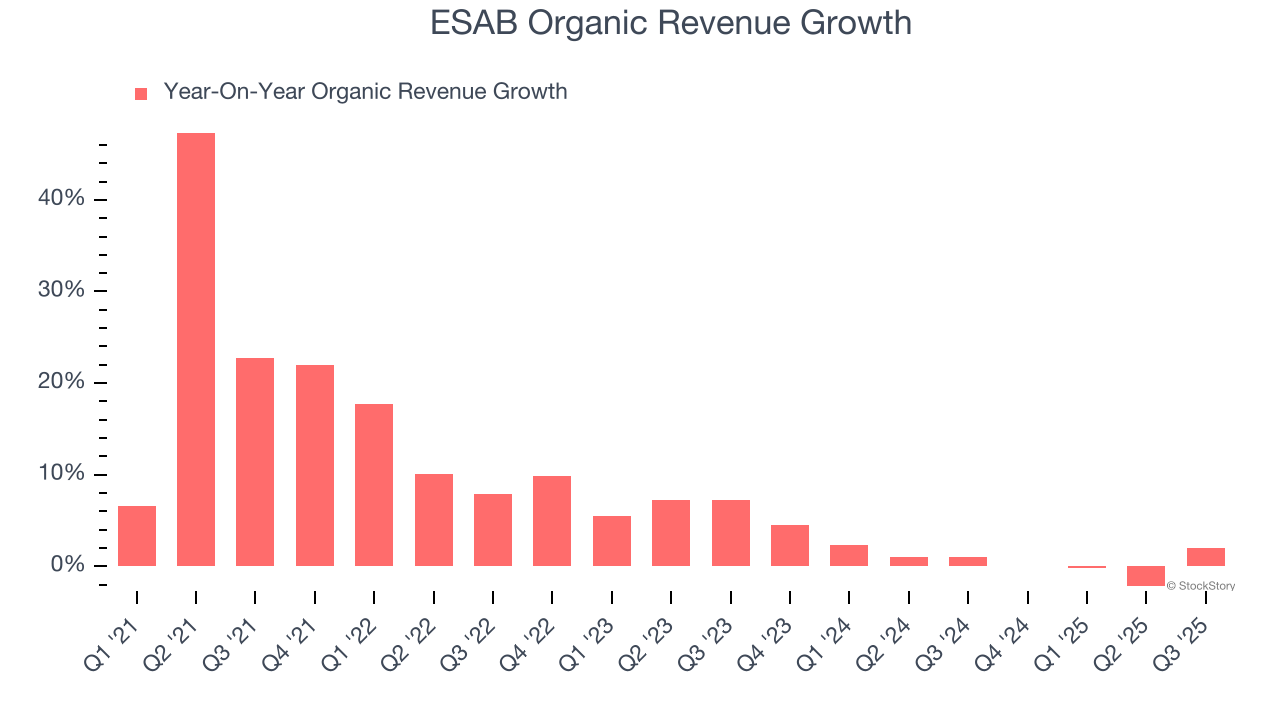
This quarter, ESAB reported year-on-year revenue growth of 8.1%, and its $727.8 million of revenue exceeded Wall Street’s estimates by 4.6%.
Looking ahead, sell-side analysts expect revenue to grow 5.5% over the next 12 months. Although this projection indicates its newer products and services will catalyze better top-line performance, it is still below the sector average.
Software is eating the world and there is virtually no industry left that has been untouched by it. That drives increasing demand for tools helping software developers do their jobs, whether it be monitoring critical cloud infrastructure, integrating audio and video functionality, or ensuring smooth content streaming. Click here to access a free report on our 3 favorite stocks to play this generational megatrend.
Operating Margin
Operating margin is an important measure of profitability as it shows the portion of revenue left after accounting for all core expenses – everything from the cost of goods sold to advertising and wages. It’s also useful for comparing profitability across companies with different levels of debt and tax rates because it excludes interest and taxes.
ESAB has been an efficient company over the last five years. It was one of the more profitable businesses in the industrials sector, boasting an average operating margin of 14.3%. This result isn’t surprising as its high gross margin gives it a favorable starting point.
Analyzing the trend in its profitability, ESAB’s operating margin rose by 2.4 percentage points over the last five years, as its sales growth gave it operating leverage.
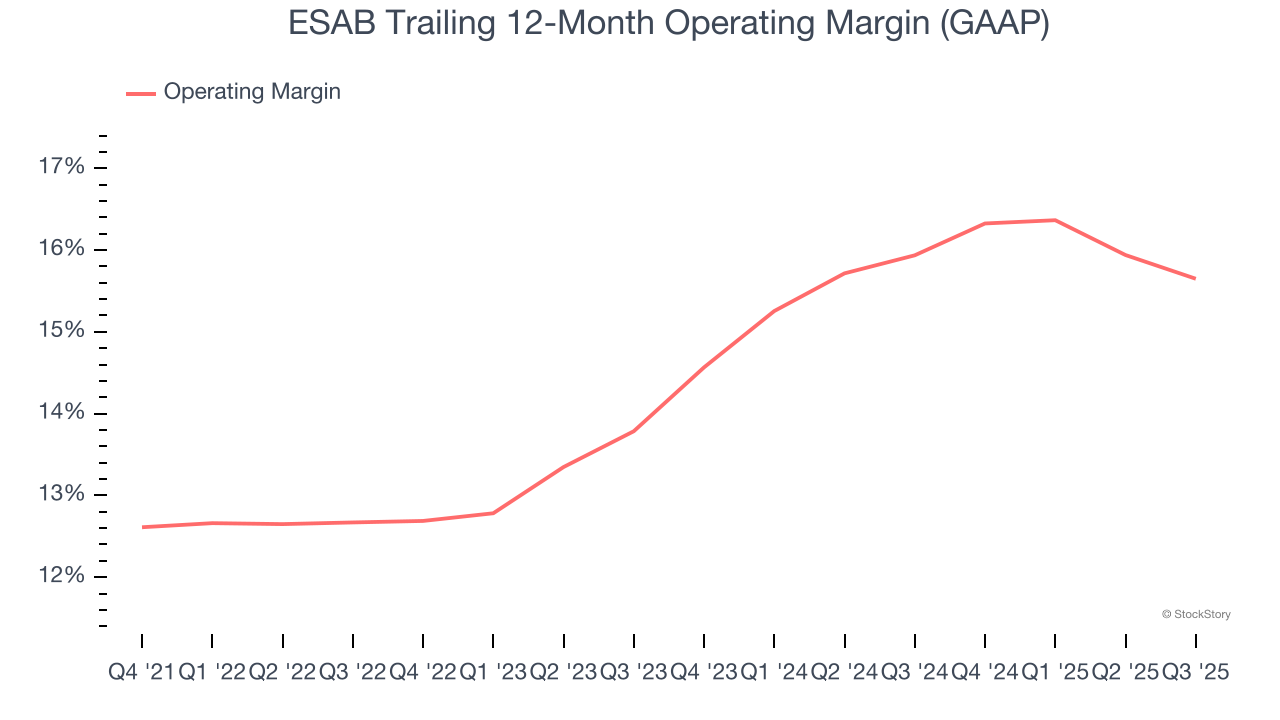
This quarter, ESAB generated an operating margin profit margin of 14.6%, down 1.1 percentage points year on year. Since ESAB’s operating margin decreased more than its gross margin, we can assume it was less efficient because expenses such as marketing, R&D, and administrative overhead increased.
Earnings Per Share
We track the long-term change in earnings per share (EPS) for the same reason as long-term revenue growth. Compared to revenue, however, EPS highlights whether a company’s growth is profitable.
ESAB’s weak 3.6% annual EPS growth over the last four years aligns with its revenue performance. On the bright side, this tells us its incremental sales were profitable.
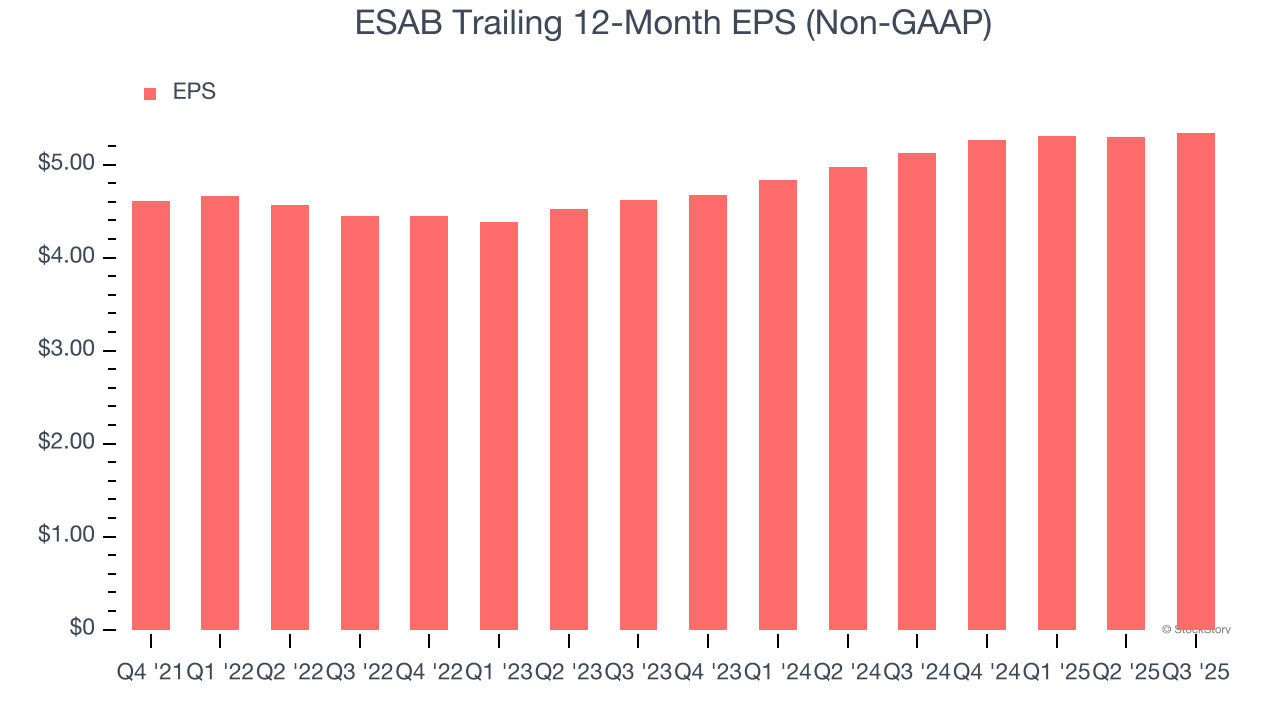
Like with revenue, we analyze EPS over a more recent period because it can provide insight into an emerging theme or development for the business.
For ESAB, its two-year annual EPS growth of 7.5% was higher than its four-year trend. Accelerating earnings growth is almost always an encouraging data point.
In Q3, ESAB reported adjusted EPS of $1.32, up from $1.28 in the same quarter last year. This print beat analysts’ estimates by 3.7%. Over the next 12 months, Wall Street expects ESAB’s full-year EPS of $5.34 to grow 7.9%.
Key Takeaways from ESAB’s Q3 Results
We were impressed by how significantly ESAB blew past analysts’ revenue expectations this quarter. We were also glad its organic revenue outperformed Wall Street’s estimates. Overall, we think this was a solid quarter with some key areas of upside. The stock remained flat at $121.14 immediately after reporting.
So should you invest in ESAB right now? When making that decision, it’s important to consider its valuation, business qualities, as well as what has happened in the latest quarter. We cover that in our actionable full research report which you can read here, it’s free for active Edge members.






